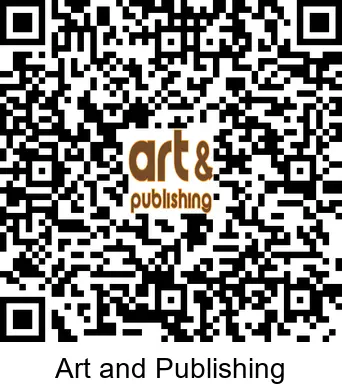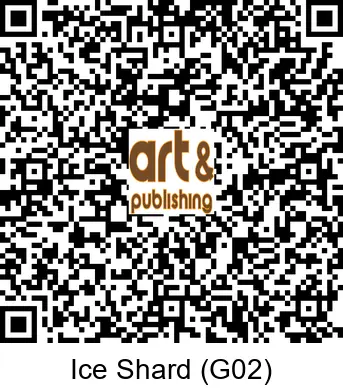Whether you're preparing for an exhibition, setting up a gallery show, or simply want to enhance the viewing experience for collectors and visitors, QR codes offer a simple yet powerful way to share more about your artwork. People often search for adobe QR code generator or canva qr code generator, but we can make it a lot simpler (and free!). Here's how we do it at Art and Publishing — and how you can, too.
Why Use QR Codes for Art?
When someone views a painting at an exhibition, they often want to know more — about the piece itself, the inspiration behind it, the materials used, or whether it's available for purchase. Traditionally, this information would be printed on labels or brochures, often in multiple languages. Updating it could be tedious and costly.
Now, almost everyone has a smartphone. With a small QR code placed beside your artwork, visitors can instantly access rich, multilingual content tailored to their language settings or browser — all without touching a thing.
Advantages of Using QR Codes
- ✅ Live updates: Change the linked content at any time, even during an exhibition.
- 🌍 Multilingual support: Automatically shows content based on the viewer's language settings.
- 🎨 Branding: Include your logo to make it yours.
- 📊 Analytics: Track how often each artwork’s code is scanned and when.
- 📅 Event links: Promote future shows or exhibitions directly from the label.
- 🛒 Sales enablement: Direct visitors to purchase pages or contact forms.
Our Setup: Simple, Professional, Affordable
At Art and Publishing, we wanted a QR labeling system that was easy to use, cost-effective, and looked professional.
We use the Brother QL-820NWB label printer — an affordable printer that works via USB, Wi-Fi, or Bluetooth. It uses 28 mm-wide adhesive labels and features automatic cutting for clean, uniform results. The labels we use are removable and leave no residue, which is essential for preserving gallery walls and frames.
We use the Brother QL-820NWB printer and 28 mm removable labels — both work beautifully for exhibitions.
👉 Check the Brother QL-820NWB on Amazon (affiliate link)
How to Create Your QR Codes – Free & Fast
To make the QR code creation process seamless, we developed our own web-based QR code generator — built specifically for exhibitions and artists. It’s 100% free to use, with:
- No sign-up
- No tracking
- No limits
You can:
- Add a title (e.g. the artwork name)
- Enter a URL (for a multilingual artwork description, shop link, or event page)
- Upload your logo for branding
- Download a 300 DPI print-ready label — perfect for clean, scannable 2.5 × 2.5 cm or 1 × 1 inch labels
🔗 Try it now at www.adoli.com/qr
Want to see how quick and easy it is to create and print QR code labels? Watch this 28-second video showing the full process — from generating the code to printing it using the Brother QL-820NWB
Try It Yourself — Scan the Code Below
Want to see how it works before you generate your own?
Scan the QR code below using your mobile phone. It will take you directly to our homepage — just like your visitors would experience it at an exhibition. Or scan the one we made of one of the paintings.


Once you've seen it in action, you’ll realize how powerful and easy it is to use.
🛒 Tools we use: Brother QL-820NWB on Amazon (affiliate link)
Final Thoughts
Creating QR code labels for your artwork can completely transform the way viewers interact with your pieces. You can share more, sell more, and track engagement — all without lifting more than a label.
Whether you're preparing for your first show or managing a growing collection, this simple solution makes your art more accessible, professional, and memorable.
➡️ Start generating your QR codes today at www.adoli.com/qr
📣 And if you find it useful, please share it with fellow artists, curators, or galleries.
Note: As an Amazon Associate, we may earn from qualifying purchases — at no extra cost to you.